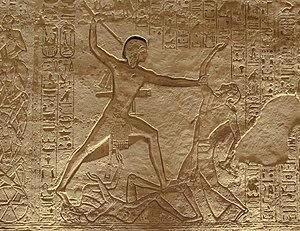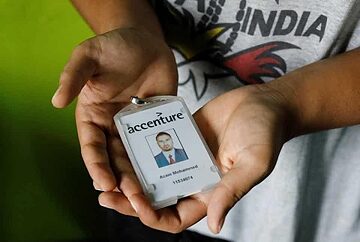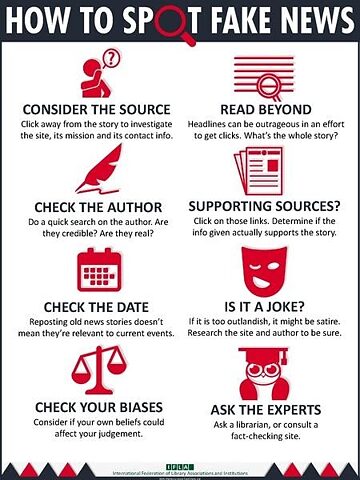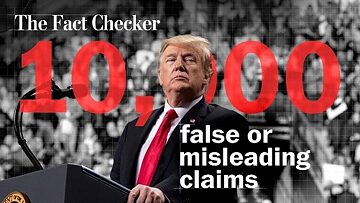A Brief Overview of ‘Fake News’ in the Age of Information - Nayeemudeen Syed Ibrahim
Contents
- What is fake news and disinformation?
- Comparison of Fake News and Disinformation in History and in the age of Information
- Spread and Consumption of Fake News Online
- Combating Fake News
- Conclusion
- References
‘Fake news’ and disinformation are rampant in our times as an unsavoury symptom of the age of Information. It has widened the divide in many societies, encouraged the growth of extremism, destroyed people’s lives and in some cases is even responsible for deaths. Fake news today has affected countless people around the world and in this article, we will briefly explore the long troublesome history of disinformation, its contemporary impacts, mechanisms that allow fake news to thrive and ways to limit the impact of disinformation.
1. What is Fake News and Disinformation?
Broadly speaking, fake news is untrue information often with mass appeal, masquerading as real news in order to promote certain causes or to generate revenue through deceit. Fake news, although a relatively new term, has existed throughout history and by no means is a recent phenomenon. One of the earliest examples of such instances is the apparent victory of Ramses the Great of Egypt in the battle of Kadesh against the Hittites of Anatolia in the 13th century B.C. When Ramses returned home, he was widely celebrated, and scenes of his stunning victory were painted in many temples. However, the treaty signed between both the kingdoms reveals that the battle ended as a stalemate. Ramses had cleverly spread lies and propaganda to mask his failure in defeating the Hittites.
Propaganda is also an example of fake news. In order to further understand fake news, we will look at seven types of fake news:
- Satire or parody- Although satire is made with no intention to spread misinformation, it has the potential to fool people.
- False connections- Using unrelated visuals and headlines in articles that subtly imply untrue views.
- False context – Using genuine information and taking it out of context.
- Misleading content- Misleading and selective use of information to frame an individual or an issue.
- Imposter content- Impersonation of genuine sources.
- Manipulated content-Manipulation of genuine information like falsely edited photos.
- Fabricated content- Probably the most deserving of the title ‘fake news’ as most of its content is untrue.
- Disinformation- Content created and shared by people with malintent
- Misinformation- Content shared by people without malintent, sometimes unknowing victims of disinformation.
- Malinformation- Genuine content shared with malintent.
2. Comparison of Fake News and Disinformation in History and in the age of Information
The very first example we will look at takes us to easter Sunday in 1475 in Trent, modern day Italy. A two and a half year old child named Simonino had gone missing. No one knew where the toddler had disappeared, but a preacher named Bernardino Da Feltre had gone to claim in his sermons that the body of the child had been found in the basement of a Jewish home, who’s blood had been drained by the Jews for Jewish rituals. These unsubstantiated rumours had unfortunately spread very fast. The ruler of the city, Prince-Bishop Johannes Hinderbach promptly placed the entire jewish population of the city under arrest and burnt 15 of them at the stake for their alleged guilt. This story spread to the surrounding countryside and soon similar atrocities were committed in the surrounding communities. Soon, the papacy had come to know of these atrocities and demanded Hinderbach. But Hinderbach refused to meet the papal legate, further spread more fake news of Jews drinking the blood of Christian children and canonized the young Simonino as Saint Simon. Due to the popular hatred of Jews at that point and support for Hinderbach, the papacy was unable to interfere with him, thereby furthering the long history of anti-Semitism in Europe.
Now, another fatal example of disinformation takes us to July 2018 in the small village of Murki in the hinterland of south india. Five young men including a Qatari tourist took their SUV from the nearby metropolis of Hyderabad and decided to go to the countryside for a picnic. They decided to stop at the small village of murki for the picnic. Thirty two year old Mohammed Azam decided to walk to a couple of the village children and gave them some chocolates and the men later continued on with their day. But, unbeknownst to them, the Village whatsapp group had received news of child kidnappers arriving at the village with the picture of Azam giving chocolates to the children and his friends. The five friends were still enjoying their day until a mob of the villagers approached them and accused them of being kidnappers. They tried to reason with the villagers but after being hit, they decided to get into their car and speed away. But the inhabitants of Murki called their neighbours to block the village road. Soon the car hit a makeshift roadblock and the 5 friends were pulled out of their car and beaten. While the four of Azam’s friends sustained injuries, Azam was killed for his simple act of kindness to give chocolates to the children. That day, Mohammed Azam had become one of the long list of victims of India’s ‘Whatsapp lynchings’. The police officers investigating the murder said that deep rooted prejudices against minorities (in this case, muslims) was also to blame.
After the lynching, a superintendent of police in Telangana state observed that “India is already vulnerable due to religious and caste fault lines and when you add whatsapp to the mix, things can easily get out of control.” Thirty men and women were arrested after the lynching and when one of the village folks was asked why the villagers had attacked the men, he replied that “people made a mistake” but also said “Did you see his face? His big beard? He looked like a terrorist”. But deep-rooted prejudices were not the only issue that caused the lynching. For many months, there had been widespread circulation of fake news regarding child kidnappings in whatsapp, accompanied with pictures of mutilated and dead children. Considering that tens of thousands of poor children are trafficked in India each year, its understandable how the rural uneducated village folks became paranoid of the outsiders who had just entered their village. The police later clarified that there was no presence of child kidnapping gangs in the area and that the whatsapp forwards had no basis in reality. Unfortunately, Azam was neither the first nor the last to be killed due to fake news in India.
In both the above-mentioned dangerous examples, we can see how fake news can create and fuel existing prejudices in communities into conflicts. We can also see how some individuals use fake news and disinformation for their own benefit. Nowhere are such individuals more visible than in the field of politics.
Now, when saying fake news in politics, there’s one individual that comes to mind, the 45th president of the United States, Donald J. Trump. Arguably, no politician in recent American history has used fake news to their advantage as Donald Trump has. He has actively used fake news to discredit his opponents, galvanize his supporters, raise his standing and most recently, to discredit the entire American electoral system after his opponent won more votes than himself. Donald Trump in many ways has shown the world the power of fake news and information pollution in the modern age of Information. After the advent of social media, its clear now that fake news can not only tear apart communities, but entire nations.
3. Spread and Consumption of Fake News Online
In order to identify and prevent fake news we must understand how fake news is spread and how its consumed. Spreading of fake news has 3 main factors.
- Bots- There are millions of bots across social media. It is estimated that Facebook, twitter and Instagram together have a hundred and ninety million bots. Bots in these platforms post continuously using trending topics and hashtags in order to reach as many people as possible.
- People- While bots spread fake news a lot, Humans are responsible for the re-transmission of fake news. Studies have also shown that humans are more likely to share fake news stories than real stories, since fake news stories are often more sensational.
- Microtargeting- Fake news often target their audience through social media analytics and cookies. Although these features were initially developed in order to better suggest content and advertisements to the user, recent data leaks and Information sold by these IT companies are ending up in the wrong hands and therefore used to better present fake news to unsuspecting consumers.
Many people wonder how so many people around the world fall for fake news. One of the main reasons is cognitive bias. Cognitive biases essentially act as mental shortcuts and there are four ways it can make us susceptible to Fake news.
- Acting without reading- In the fast-moving modern world, many people tend to take news by reading just the headline, which can cause confusion and can be exploited by fake news by using misleading headlines.
- Popularity cues acceptance- This is when something is widely believed around you, your cognitive bias pushes you to believe it too.
- Partisanship- Ones political leanings deciding what to believe and what not to believe. Partisanship sometimes puts people in mental traps
- Persistence of Inaccuracy- The tendency of Fake news to stick around even after being debunked.
Here are a few ways to identify fake news:
Due to the growing sophistication of fake news, experts are trying to find different ways and technologies to counter it. Many experts are using machine learning and data mining techniques in order to discover even sophisticated fake news articles although these techniques are not in wide use yet.
As of now fact checkers are the best defence against the swarms of fake news. Several reputable news sources such as BBC, New York Times and CNN that have published many fact-checking reports on many important issues. Reliable news agencies also attempt to clarify statements from individuals and organizations by contacting them. Due to the recent swarm of fake news around the world, there have been independent media organizations around the world with the sole purpose of fact checking. Examples of these organizations include politifact, factcheck.org and alt-news. Recently, access of various databases has also been used by fact checkers, news agencies and policy makers to help effectively combat information pollution. It is also the duty of the people to make sure the content they are posting online is credible.
5. Conclusion
Fake news is as harmful today as it had always been. But unlike 20 years ago, today bots without human supervision can spread fake news to millions of people around the world with little effort. Social media companies earn billions of dollars every year and many believe they should take strong measures against fake news.
Personally, I believe that their first step must be to remove the hundreds of millions of bots on their platforms. Secondly, these companies must cooperate with fact checking organizations or set up their own strong fact checking organizations in order to filter the most harmful of fake news. Thirdly, these companies must have universal anti fake news rules around the world. (These rules are weaker in the developing world as compared to the developed world, for example). Lastly, governments and the people must hold these social media companies responsible for the proliferation of fake news and bringing a ‘post-factual world’.
Avoiding fake news also falls on the community. We must educate ourselves and the people close to us on how to avoid fake news. For example, children in Taiwan study media literacy classes in school in order to learn to identify propaganda and fake news. These classes must be brought to the rest of the world since fake news is a global issue. Propagators of fake news must also be punished by the law since at times, these people are responsible for deaths and communal disharmony. Fake news is also the greatest threat to democracies around the world in recent years. I believe elections must be decided freely by the people of a country. But recently, elections around the world are decided partly by bots, big businesses and external undemocratic states through the medium of Fake News. In conclusion, I would like to say that fake news and information pollution are a blight on the Information age, and it must be extinguished before it’s number of victims can grow to encompass those who are close to us and ourselves.
References
https://www.cits.ucsb.edu/fake-news/
https://firstdraftnews.org/latest/fake-news-complicated/
https://money.cnn.com/2017/11/03/media/claire-wardle-fake-news-reliable-sources-podcast/index.html
https://www.hindustantimes.com/india-news/he-looked-like-a-terrorist-how-a-drive-in-rural-india-ended-in-a-mob-attack-and-a-lynching/story-48MpOGGkqjbDwgv3eigOwJ.html
https://www.politico.com/magazine/story/2016/12/fake-news-history-long-violent-214535
https://www.bbc.com/news/av/world-us-canada-46175024




